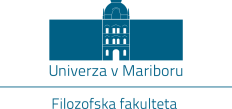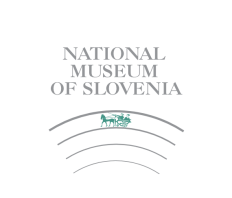Nationalisation and Musealisation of Art Collections in Slovenia in the Light of Provenance Research
Vodja projekta na ZRC
Renata Komić Marn, PhD-
Naslov v izvirniku
Nacionalizacija in muzealizacija umetnostnih zbirk na Slovenskem v luči raziskav provenience
Sodelavci
Assist. Prof. Tina Košak, PhD, Assoc. Prof. Franci Lazarini, PhD, Barbara Vodopivec, PhD, Andrea (Andrej) Furlan, MA, Polona Vidmar, PhD (University of Maribor, Faculty of Arts), Assist. Prof. Mateja Kos Zabel, PhD (National Museum of Slovenia)-
ID oznaka
J6-60106
-
Trajanje projekta
1. januar 2025–31. december 2027 -
Vodilni partner
-
Vodja projekta
-
Finančni vir
Slovenian Research And Innovation Agency

Partnerji
Faculty of Arts, University of Maribor, The National Museum of Slovenia

The purpose of the project is to investigate the contexts, mechanisms, and consequences of the nationalisation and musealisation of movable artistic heritage in Slovenia between 1918 and 1991. Additionally, through provenance research, the project aims to reconstruct the profiles of individual art collections and clarify the origins and fate of selected items.
After the dissolution of Austria-Hungary, Slovenia became part of the Kingdom of Serbs, Croats, and Slovenes (later the Kingdom of Yugoslavia). In this new state, attitudes toward old and foreign, particularly German, cultural heritage led to the inadequate valuation of visual arts and antiques, as well as the extensive transfer of ownership of former noble collections into the hands of the already established bourgeois, entrepreneurial, and intellectual elite. A significant portion of this heritage was sold off at public auctions below its value and selectively musealised. This period of great changes and achievements in national cultural endeavours was sharply interrupted in 1941 by the occupation of Slovenian territory, which resulted in significant losses of artistic and cultural heritage.
With the liberation of Yugoslavia on May 9, 1945, the newly established authorities in Slovenia exerted pressure on their actual and potential opponents, a significant part of which involved disappropriation of property. This led to the accumulation of large quantities of movable property, including many items of artistic and cultural heritage. Beginning in the fall of 1945, these items were gradually secured and inventoried in special collecting centres (FZC, OZC). The distribution of these items was only concluded in the early 1950s. The cultural policy of the Communist Party of Yugoslavia, already established during the war, adopted a radical and dismissive stance toward the traditions and cultural heritage of the past. The new art of the new state was intended to justify and glorify the achievements of the people's revolution and the struggle against the occupiers, serving both class struggle and ideological education of the masses, whereas the scattered remnants of former art collections could not adequately serve the new cultural policies. However, regardless of their post-war fate and (often inappropriate) use, their origins became, and largely remained, an insignificant and silenced aspect of their identity.
Surprisingly little research has been conducted in Slovenia on these processes and their consequences for artistic heritage, even though the artworks affected by them constitute an important part of the collections held by public museums and galleries in Slovenia. In addition to addressing questions about how movable artistic heritage was collected, used, managed, and protected in the name of the nation during this period, and how its reception and valuation influenced its presentation, preservation, and accessibility, one of the central tasks of the project is a comprehensive investigation of the origins and fates of selected collections and individual artworks that were musealised and/or nationalised in Slovenia between 1918 and 1991.
Given the scope and complexity of the topic, the project proposes several case studies focusing on museum policies, wartime public auctions, private and public or state collections, as well as collectors and collecting centres. These studies will also enable the reconstruction of selected art collections. For the first time, this research will address questions of the identity, origins, and state of preservation of nationalised art collections in Slovenia and will raise the issue of how to deal with the complexities of managing public collections with unclear or missing provenance data. The decision to undertake this project also stems from the realization that both the Slovenian professional and general public are insufficiently informed, and at times misinformed, about the history and identity of nationalised artistic heritage, as well as the role and importance of provenance research. Therefore, one of the goals is to raise awareness about this sensitive but highly important issue.
The main objectives of the proposed research:
– Analysis of the mechanisms and consequences of musealisation of art collections;
– Identification and analysis of the provenance of selected nationalised and/or musealised art collections and individual works of art and their past contexts;
– Examination of the reception, role and preservation status of the artistic heritage of (defeated) opponents in new political and social contexts;
– Developing up-to-date theoretical and methodological approaches to mapping and reconstructing the nationalised and/or musealised art collections;
– Developing an innovative digital and sustainable strategic approach to the presentation, protection and preservation of cultural heritage of contested provenance.
The first stage (1 January 2025 – 31 December 2025):
- a kick-off meeting for all project group members (carried out on January 27, 2025)
- preparation the project presentation website (carried out in January 2025)
- preparation of data and establishment of data entry mask for the database (in progress since March 2025)
- field and office work (in progress since January 2025)
- preparation and publication of the project brochure, poster, and leaflet
- public lecture at ZRC SAZU
- project workshop at ZRC SAZU (carried out on April 9, 2025; September 22, 2025)
The second stage (1 January 2026 – 31 December 2026):
- field and office work
- entry of data and materials into the database
- writing articles, presentation and publication of first results
- writing articles for the project group members’ joint monograph
- round-table
- public lecture at NMS
- public guided tour of the permanent collection of the National Museum of Slovenia
- student workshop at FFUM with invited key note lecture
The third stage (1 January 2027 – 31 December 2027):
- field and office work
- public presentation of the digital database
- an interview with a selected stakeholder
- public lecture in the National Museum of Slovenia
- lecture for students at FFUM
- international project workshop at ZRC SAZU
- OA publication and presentation of the joint scientific monograph
- final presentation of project achievements
Original Scientific Article:
KOMIĆ MARN, Renata. Lost in the museum : musealisation of cultural objects in Slovenia 1945-1965. V: KACPRZAK, Dariusz (ur.), KŁUDKIEWICZ, Kamila (ur.), KORDUBA, Piotr (ur.). Das Museum in Mitteleuropa als Ort von Spannunen, als Konfliktfeld und Dialograum : Dinge - Akteure - Räume : Beiträge der 29. Tagung des Deutsch-Polnischen Arbeitskreises für Kunstgeschichte und Denkmalpflege = The museum as a place of tension, arena of conflict and space of dialogue in Central Europe : papers of the 29th conference of the German-Polish Working Group for Art History and Monument Conservation. Warszawa: Institut Sztuki Polskiej Akademii Nauk, 2025. Str. 173-193, ilustr. Das gemeinsame Kulturerbe, Bd. 15. ISBN 978-83-68411-03-4. [COBISS.SI-ID 250293507]
Lectures:
KOMIĆ MARN, Renata. Transnacionalno istraživanje povijesti i identiteta umjetničkih zbirki : vabljeno predavanje na znanstveni delavnici "Umjetničke zbirke i metodologija istraživanja provenijencije umjetnina", Knjižnica Hrvatske akademije znanosti i umjetnosti, Zagreb, 30. sep. 2025. [COBISS.SI-ID 251361539] HAZU_radionica_ZG.pdf
Workshop and conference papers:
KOMIĆ MARN, Renata. Umetnostne zbirke Pongratz, Lichtenberg, Lenarčič in Delago v luči evidenc Federalnega zbirnega centra (FZC) : predavanje na znanstveni delavnici projektne skupine "Nacionalizacija in muzealizacija umetnostnih zbirk na Slovenskem v luči raziskav provenience", ZRC SAZU, Dvorana štirih letnih časov, Ljubljana, 22. 9. 2025. [COBISS.SI-ID 250971139]
LAZARINI, Franci. Germanik - dolga pot od Rifnika do Narodnega muzeja : predavanje na znanstveni delavnici projektne skupine "Nacionalizacija in muzealizacija umetnostnih zbirk na Slovenskem v luči raziskav provenience", ZRC SAZU, Dvorana štirih letnih časov, Ljubljana, 22. 9. 2025. [COBISS.SI-ID 250971395]
kategorija: SU (S)
KOŠAK, Tina. Nakupi umetnin za opremo prostorov ministrstev Ljudske Republike Slovenije (LRS) leta 1947 : predavanje na znanstveni delavnici projektne skupine "Nacionalizacija in muzealizacija umetnostnih zbirk na Slovenskem v luči raziskav provenience", ZRC SAZU, Dvorana štirih letnih časov, Ljubljana, 22. 9. 2025. [COBISS.SI-ID 250971651]
VODOPIVEC, Barbara. Usoda inventarja Pisateljske vile po letu 1945: raziskovalna izhodišča : predavanje na znanstveni delavnici projektne skupine "Nacionalizacija in muzealizacija umetnostnih zbirk na Slovenskem v luči raziskav provenience", ZRC SAZU, Dvorana štirih letnih časov, Ljubljana, 22. 9. 2025. [COBISS.SI-ID 250972675]
VIDMAR, Polona. Grad kot zbirni center in muzej: Ptujski grad in vloga Antona Smodiča : predavanje na znanstveni delavnici projektne skupine "Nacionalizacija in muzealizacija umetnostnih zbirk na Slovenskem v luči raziskav provenience", ZRC SAZU, Dvorana štirih letnih časov, Ljubljana, 22. 9. 2025. [COBISS.SI-ID 250971907]
KOŠAK, Tina. Predmeti iz zbirke vitezov Klarwillov v dvorcu Podsmreka : predavanje na znanstveni delavnici na Umetnostnozgodovinskem inštitutu Franceta Steleta ZRC SAZU z naslovom "Umetnostne zbirke, umetnostni trg in raziskovanje provenience", Prešernova dvorana SAZU, Ljubljana, 9. apr. 2025. [COBISS.SI-ID 234352899]
KOMIĆ MARN, Renata. Transnacionalno raziskovanje zgodovine in identitete umetnostnih zbirk : predavanje na znanstveni delavnici na Umetnostnozgodovinskem inštitutu Franceta Steleta ZRC SAZU z naslovom "Umetnostne zbirke, umetnostni trg in raziskovanje provenience", Prešernova dvorana SAZU, Ljubljana, 9. apr. 2025. [COBISS.SI-ID 234353155]
KOMIĆ MARN, Renata. Researching the history of art collections in Slovenia in the 20th century : challenges and perspectives : predavanje na mednarodni znanstveni delavnici "Challenges and Perspectives for Researching the History of European Art Collections in the 20th Century", Masaryk University Brno, Department of Art History, Brno (Češka), 4. 3. 2025. [COBISS.SI-ID 229910275]
Workshops and conferences:
"Nacionalizacija in muzealizacija umetnostnih zbirk na Slovenskem v luči raziskav provenience", znanstvena delavnica projektne skupine na ZRC SAZU, Umetnostnozgodovinskem inštitutu Franceta Steleta, Dvorana štirih letnih časov, Ljubljana, 22. 9. 2025. ProveNArt DELAVNICA_PROGRAM_22_09_2025_0.pdf
"Umetnostne zbirke, umetnostni trg in raziskovanje provenience", znanstvena delavnica na ZRC SAZU, Umetnostnozgodovinskem inštitutu Franceta Steleta, Prešernova dvorana SAZU, Ljubljana, 9. 4. 2025. Umetnostne zbirke_program.pdf
"Challenges and Perspectives for Researching the History of European Art Collections in the 20th Century", mednarodna znanstvena delavnica na Masaryk University Brno, Department of Art History, Brno (Češka), 4. 3. 2025. WS BRNO.pdf
Professional articles:
KOMIĆ MARN, Renata. Transferred to Reich ownership: documenting, identifying and restituting Nazi-looted cultural property : mednarodna konferenca v organizaciji Centra za dokumentacijo prenosov lastništva kulturnih dobrin žrtev druge svetovne vojne (CDMP), Praga,Muzej dekorativne umetnosti, 17. in 18. september 2024. Kronika : časopis za slovensko krajevno zgodovino. [Tiskana izd.]. 2025, letn. 73, št. 1, str. 189-196, fotogr. ISSN 0023-4923. https://kronika.zzds.si/kronika/issue/view/374/321. [COBISS.SI-ID 230233091]
Other performed works:
KOMIĆ MARN, Renata. Trije "hišni" slikarji, pozabljena sekundogenitura in podjetna vdova: umetnostne zbirke grofov Attems v 18. stoletju : predavanje v organizaciji Slovenskega društva za preučevanje 18. stoletja, Dvorana štirih letnih časov ZRC SAZU, Ljubljana, 6. maj 2025. [COBISS.SI-ID 235271427]
KOMIĆ MARN, Renata. Nacionalizacija in muzealizacija umetnostnih zbirk na Slovenskem v luči raziskav provenience, predstavitev projekta : prispevek na študijskem dnevu na Umetnostnozgodovinskem inštitutu Franceta Steleta ZRC SAZU z naslovom "Umetnostne zbirke, umetnostni trg in raziskovanje provenience", Prešernova dvorana SAZU, Ljubljana, 9. apr. 2025. [COBISS.SI-ID 234351107]
KOMIĆ MARN, Renata, TRŠKA, Tanja. Umetnostne zbirke in umetnostni trg v Kraljevini Jugoslaviji 1918–1941, predstavitev projekta in aktivnosti v okviru bilateralnega znanstvenoraziskovalnega sodelovanja med Republiko Slovenijo in Republiko Hrvaško : prispevek na študijskem dnevu na Umetnostnozgodovinskem inštitutu Franceta Steleta ZRC SAZU z naslovom "Umetnostne zbirke, umetnostni trg in raziskovanje provenience", Prešernova dvorana SAZU, Ljubljana, 9. apr. 2025. [COBISS.SI-ID 234350851]